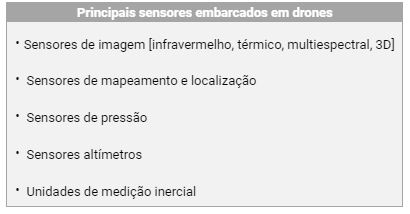*Per Marcio Arbex, Patryck Oliveira, Victor Cruz, Fernando Dias and Brunno Moretti
Often compared to the advent of electricity that transformed industry in the 19th century, artificial intelligence has already taken on an evident prominent role in today's economy. Now, AI landed once and for all in the drone, geotechnology and satellites industry, through integration technologies and analysis of large volumes of data and the internet of things capacity, offering new information for decision making that impact both society and companies .
An example is in fighting fires. Drones with embedded sensors collect environmental information in real time and generate predictive scenarios based on geolocation data and meteorological instruments. There are several successful cases around the world. In Queensland, Australia, where the koala population has decreased by 80% over the past 25 years, drones with thermal cameras and AI help researchers and ecologists locate koalas on top of eucalyptus, where they are difficult to see, so they can control and preserve the wildlife in that location.
Big data, machine learning, data science, geoanalytics and edge computing technologies enhance the IoT ecosystem, acting as coprocessors and collecting data in real time in partnership with drones and sensors. Actions are automated with advanced analysis and predictive models on active data, through streaming applications that allow systems to score data, send alerts and take quick, timely and contextual measures.

In the industry, an interesting case study comes from Bayer Crop Science, which grows data analytics on crops, seeds and digital agriculture, helping it to accurately visualize how farms are doing, from the point of view of soil, irrigation and fertilization. As the fields are not uniform, the plants need different conditions depending on where they are - some do not need fertilizers and others need more or less water, for example. To monitor everything accurately, the company uses drones to take high-definition photos and software based on algorithms generates data on a large volume of images. The discoveries that the software makes support decision making regarding agricultural practices and management. This innovation impacts 14,000 Bayer users globally.
Within this scenario, drones are at a stage where more and more organizations from different sectors are betting on their viability and efficiency. The construction sector was one of the first to adopt drones, in tasks such as earthmoving management and building monitoring, while the insurance sector has been using drones to carry out inspections on structures to assess the extent and cause of damage, in addition to assessing the type and condition of the building when providing an insurance quote. Government institutions have also been expanding the use of drones to increase police efficiency and in search and rescue operations. This means that in the coming years, we can expect hundreds and even thousands of companies in Brazil to follow suit and use drones for many purposes. This market is expected to absorb a significant volume of investments going forward.
The unmanned aerial systems industry is expected to turn over $ 45.8 billion in 2025, according to the Drone Industry Insights. In the United States alone, there are more than 1.5 million registered drones, with 442,000 commercials and 1.1 million recreational drones, according to Federal Aviation Administration, entity responsible for American civil aviation.
At the same time, the use of drones combined with IoT should be further leveraged since the arrival of 5G, due to the high availability capacity, stimulating the growth of data transfer and connectivity in real time. 5G will optimize IoT networks through radio frequency management that meets the needs of both narrowband and broadband IoT applications, which can be on demand.
Faced with a promising scenario, the moment is favorable for partnerships between all links in the chain, mainly between suppliers of sensors, instruments and other devices interconnected in a network together with software manufacturers aimed at industrial applications. Drone technology combined with all these innovations rises to the next level, providing services with new levels of automation and data analysis solutions that will bring transformative impact in different markets.
* Marcio Arbex, Director of Solutions Engineering; Patryck Oliveira, Solutions Engineer; Victor Cruz, Solutions Engineer; Fernando Dias, Solutions Engineer and Brunno Moretti, Value Engineer. All are part of TIBCO Software.
Notice: The opinion presented in this article is the responsibility of its author and not of ABES - Brazilian Association of Software Companies













